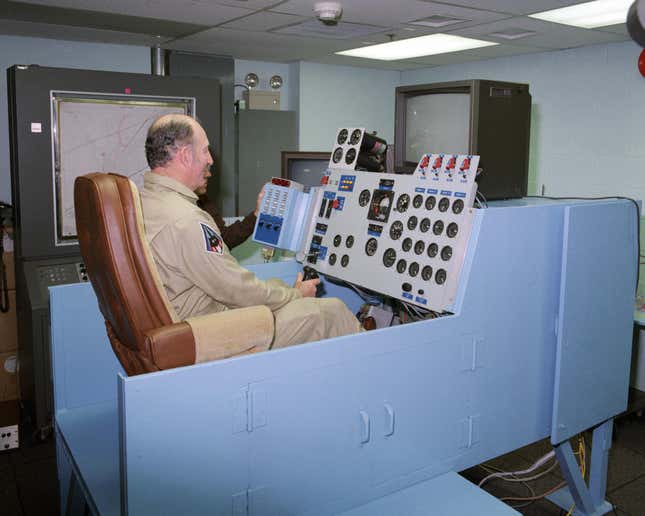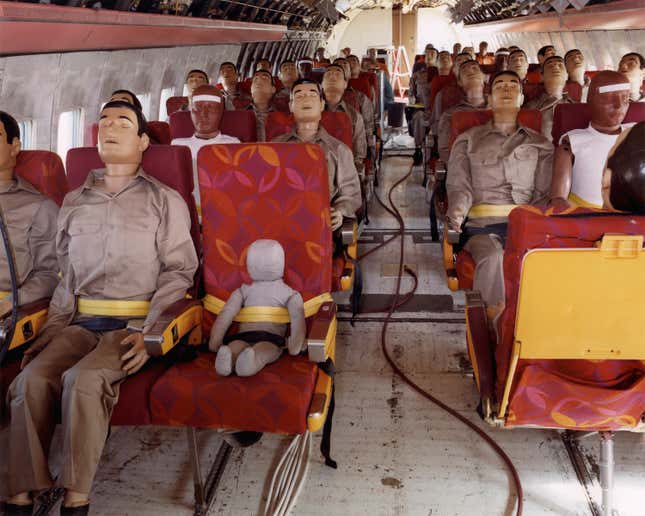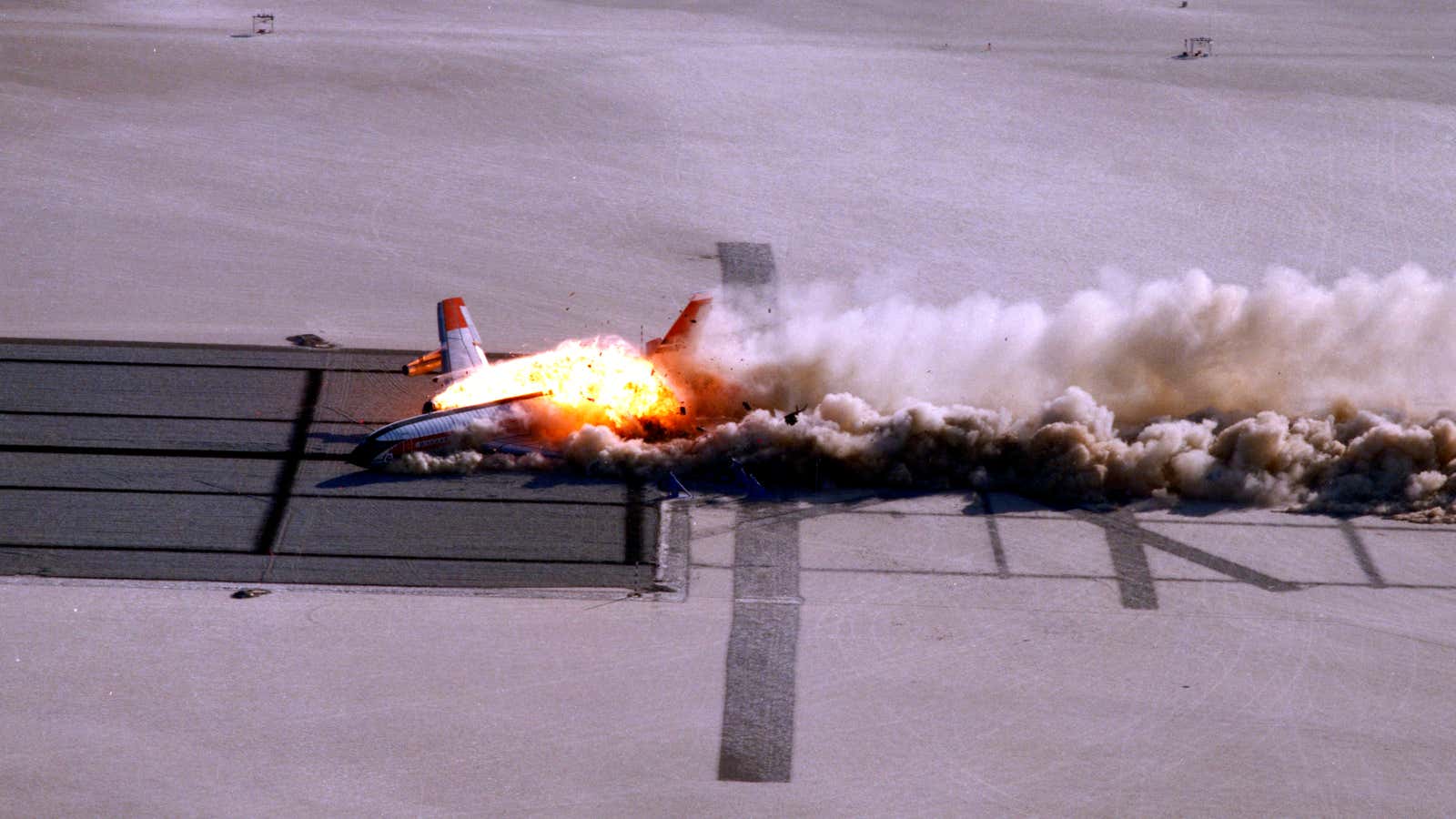It’s an experiment that an eight-year-old aviation fanatic might concoct: What if we crammed a remote-controlled jetliner with special fuel and crashed it into the ground—just so—in order to ignite its gas tanks?
That’s exactly what NASA and the Federal Aviation Administration did 35 years ago, in one of the most visually arresting safety tests ever performed. Spoiler alert: The test helped change the way we fly for the better, but not the way its architects envisioned.
“This is the only time it ever happened,” Albion Bowers, the chief scientist at NASA’s Armstrong Flight Research Center in California, says of the Controlled Impact Demonstration, as it is known officially, or the Crash in the Desert, as it was known by internal wags. “There aren’t that many airframes that are available for that kind of work.”
In 1980, when Congress approved the program, jetliner fatalities had been rising in the previous decade. Some experts identified a particular issue: Passengers often survived the impact of a crash, only to die in fires caused by igniting jet fuel. One answer was something called anti-misting kerosene, or AMK—a fuel with an additive designed to prevent it from catching fire if it spilled out during a crash.
The primary goal of the CID was to test that additive. The plan was to crash a decommissioned Boeing 720 in such a way that the fuel tanks would rip open on pre-placed barriers, creating an opportunity for the AMK to prevent it from igniting. This did not work, in part because the plane impacted differently than planned, and in part because AMK just wasn’t very effective.
Hence, this impressive fireball:
“One of the other things that we found out that day was the additive, the AMK itself, once you ignited the fuel, it made the fuel much harder to put out. The entire vehicle was left to burn out on its own,” Bowers, then a junior aerodynamicist at NASA Armstrong who helped prepare and analyze the experiment, recalls.
The VIPs on-hand, including Secretary of Transportation Elizabeth Dole, who told reporters the day before that “we expect to make history,” hopped on private planes and skedaddled rather than talk to the press.
It could have been worse. “One of the things that we did not realize at the time and was added as a last-minute afterthought, we did not have a way to bring the thing down if it started heading off toward LA or San Francisco,” Bowers says. “So we asked the Air Force to roll out some fighters with live armament onboard and their job was to intercept and shoot it down before it got away anywhere.”

Thankfully, the remote control system developed expressly for this experiment—the first time a four-engine jetliner had been controlled from the ground—worked largely as planned, despite the difficulty of using the technology of the time to control an airplane at a distance.
To make the most of their opportunity to crash a jetliner, the engineers had covered it in sensors and cameras, and stacked the plane with crash test dummies. That helped generate data used to make planes safer, one reason that US airliners are some of the safest in the world, going nearly a decade without any deadly accidents until an engine malfunction on a Southwest plane last year killed one passenger.
When it came to post-impact fatalities, the safety researchers realized that a bigger problem than fuel was that plastic fixtures in the airplane released toxic fumes as they heated, disabling and killing passengers. Today, jetliners are required to be built of materials that won’t overpower people during fires after a crash. The CID plane also tested floor-level lighting designed to help people evacuate smoky cabins.

Another issue revealed by the accelerometers on the crash dummies was seat design: At the time, seats were built solidly so they didn’t break in a crash—instead, they transmitted the energy of impact into the passengers. Today, airline seats are built to bend and break during a crash, absorbing the energy of the impact so your body does not.
Bowers spent the rest of his career working on aviation research at NASA, most recently helping develop new technology to help pilots avoid flying their planes into the ground, a problem that is now responsible for 20% to 30% of recent aviation fatalities.
“Sometimes the experiment doesn’t work the way you thought it would,” Bowers says. “You get surprised, sometimes when it does that, you can learn a heck of a lot.”
